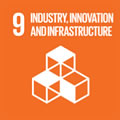Por favor, use este identificador para citar o enlazar a este item:
http://hdl.handle.net/10261/311538COMPARTIR / EXPORTAR:
 SHARE SHARE
 CORE
BASE CORE
BASE
|
|
| Visualizar otros formatos: MARC | Dublin Core | RDF | ORE | MODS | METS | DIDL | DATACITE | |

| Título: | CO emissions and temperature analysis from an experimental and numerical study of partially premixed methane flames impinging onto a cooking pot |
Autor: | Laguillo, Saúl; Ochoa, José Salvador; Tizné, Eduardo; Pina, Antonio; Ballester, Javier; Ortiz, Alfredo | Palabras clave: | Methane Flame-wall interaction Carbon monoxide Single flame burner Partially premixed flame Inner premixed flame cone |
Fecha de publicación: | 9-ene-2021 | Editor: | Elsevier BV | Citación: | Journal of Natural Gas Science and Engineering 88: 103771 (2021) | Resumen: | The increase of thermal efficiency compatible with low carbon monoxide (CO) emissions is a challenging and permanent target in the design of any burning technology such as domestic gas cooking burners. The main goal of this work is to provide a deeper insight into the CO formation and its relationship with the flame structure when natural gas (NG) is burnt in these devices. Given their geometrical complexity, a simpler configuration is employed to carry out new experimental tests assuming similar operating conditions. Then, numerical modeling is validated and subsequently used to deeply analyze the flame-wall interaction phenomena. The simplified burner consists of an axisymmetric, partially premixed methane flame impinging perpendicularly onto the bottom wall of a water pot. The influence of burner-to-pot distance, flame thermal power, primary aeration and inside-pot water temperature on CO emissions and thermal efficiency is evaluated. A decrease in CO emissions is observed as primary aeration or wall temperature increases. Nevertheless, non-monotonic trends appear for changes in burner-to-pot distance or flame thermal power. The trends are numerically well captured selecting the detailed GRI-Mech 3.0 chemistry mechanism. The analysis of the computational results reveals that CO emissions and thermal efficiency are strongly related to the relative boundary position of the inner premixed flame cone and the wall. The growth of the distinct zones of the flame where CO chemically reacts with primary and secondary air is constrained by the presence of the pot wall. This fact drives the final CO concentration, and incidentally the thermal efficiency, leading to a factual criterion for the design of NG burners. | Descripción: | 19 figures, 3 tables.-- Supplementary information available.-- © 2020. This manuscript version is made available under the CC-BY-NC-ND 4.0 license https://creativecommons.org/licenses/by-nc-nd/4.0 | Versión del editor: | http://dx.doi.org/10.1016/j.jngse.2020.103771 | URI: | http://hdl.handle.net/10261/311538 | DOI: | 10.1016/j.jngse.2020.103771 | ISSN: | 2949-9097 | E-ISSN: | 2949-9089 |
| Aparece en las colecciones: | (LIFTEC) Artículos |
Ficheros en este ítem:
| Fichero | Descripción | Tamaño | Formato | |
|---|---|---|---|---|
| COEmissionsandTemperature.pdf | Artículo principal | 6,18 MB | Adobe PDF |  Visualizar/Abrir |
| 1-s2.0-S1875510020306259-mmc1.pdf | Información suplementaria | 148,86 kB | Adobe PDF |  Visualizar/Abrir |
CORE Recommender
SCOPUSTM
Citations
6
checked on 26-abr-2024
WEB OF SCIENCETM
Citations
5
checked on 24-feb-2024
Page view(s)
30
checked on 26-abr-2024
Download(s)
115
checked on 26-abr-2024
Google ScholarTM
Check
Altmetric
Altmetric
Este item está licenciado bajo una Licencia Creative Commons



